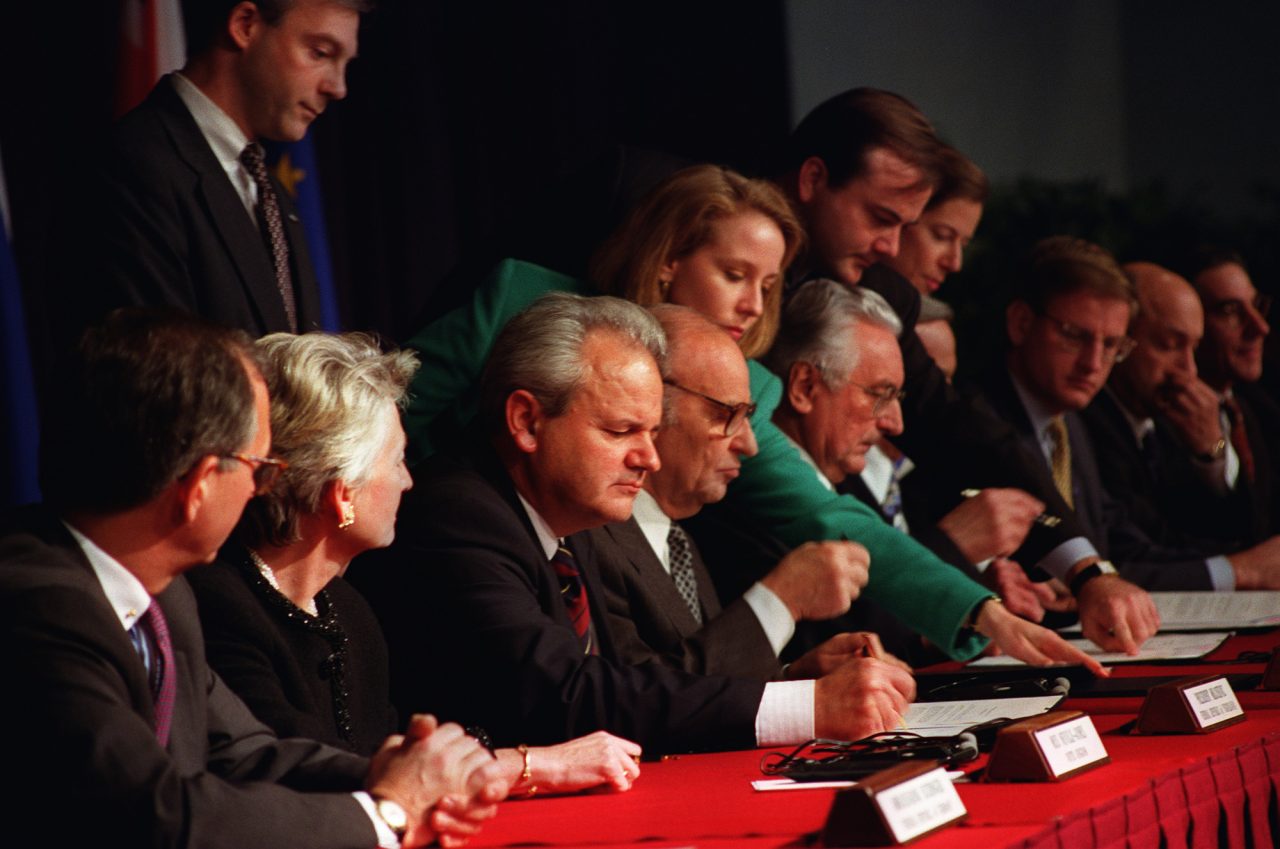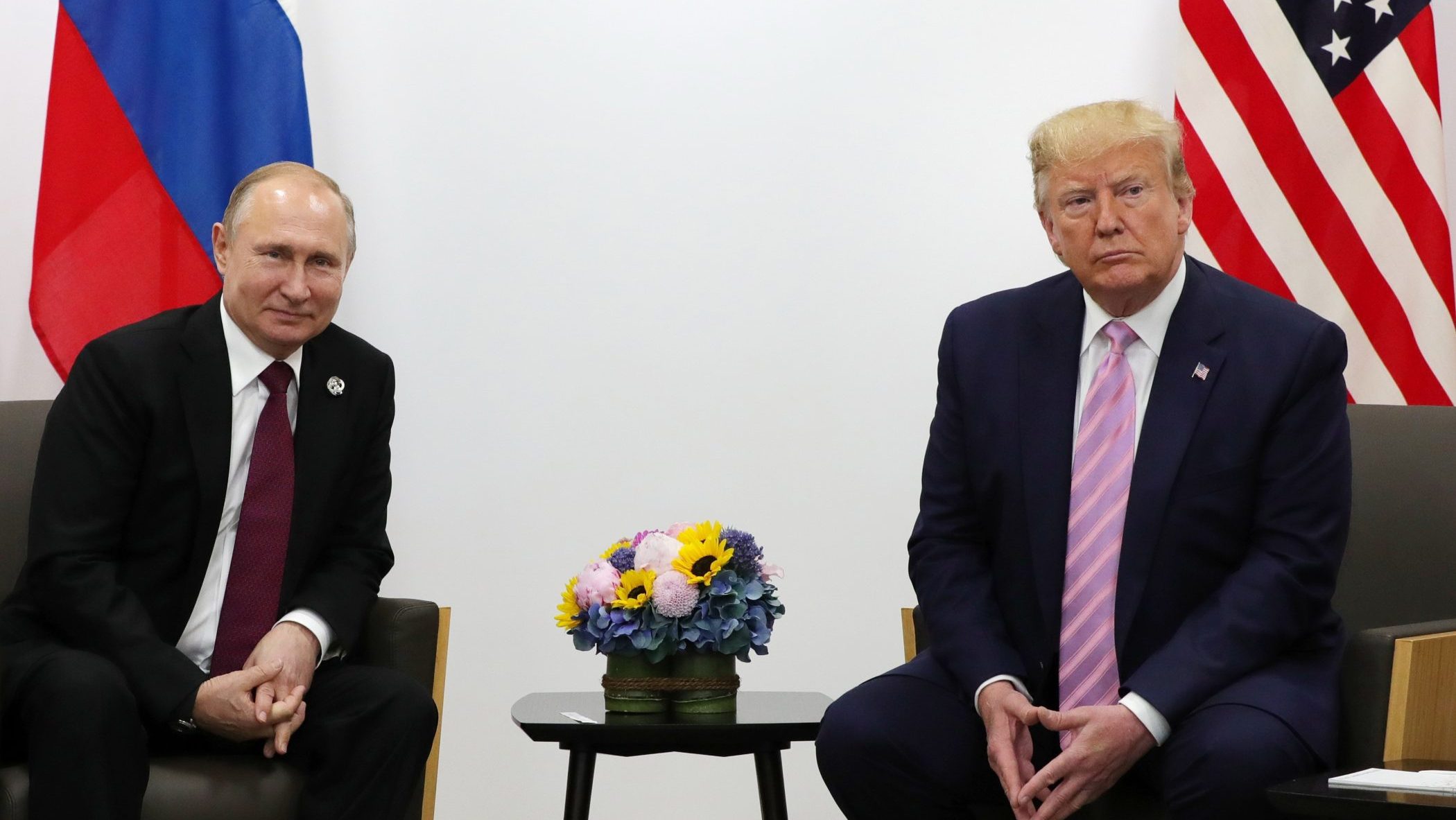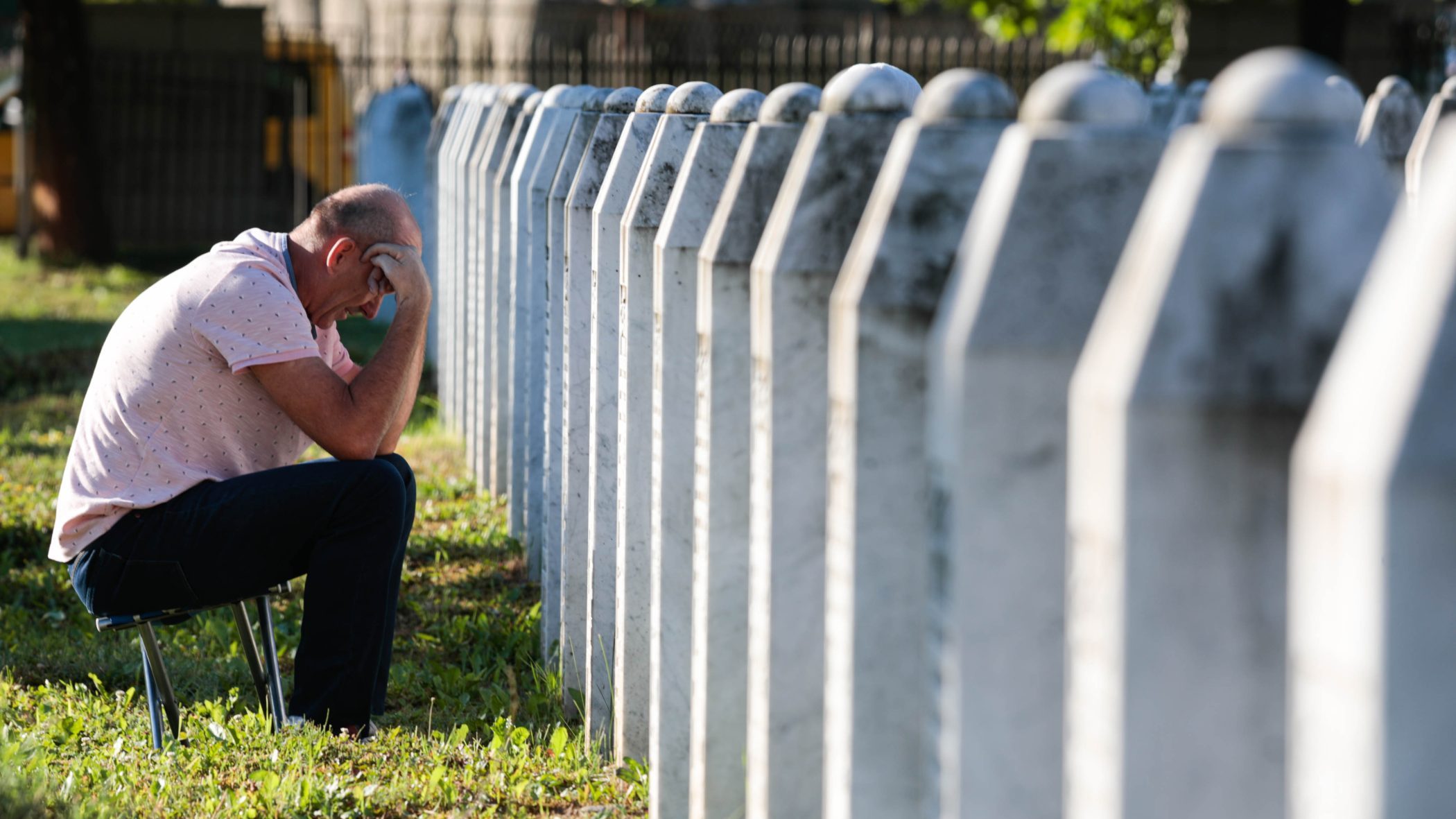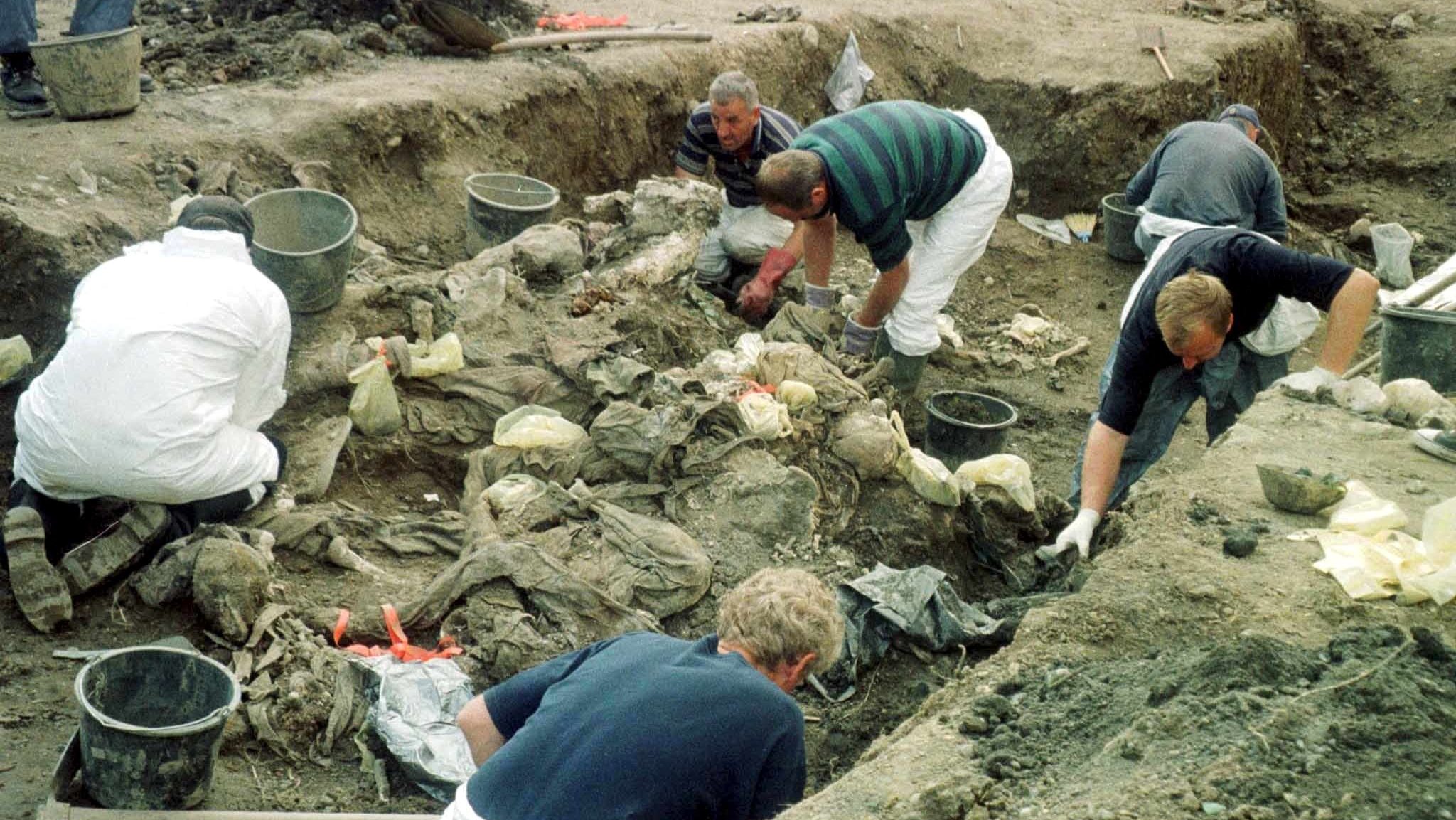This post is also available in: Bosnian
The 1995 negotiations were overseen by a united Western front of US President Bill Clinton, France’s “human bulldozer” Jacques Chirac, Britain’s John Major – who advanced the Northern Ireland peace process – and Germany’s Helmut Kohl, one of the architects of European integration.
Today’s fractured Western leadership presents a stark contrast, with Trump’s return to power in the US, a collapsed government in Germany, an ever more fragile government in France and a new prime minister in Britain.
Russia’s Vladimir Vladimir Putin “is still able to use the war to strengthen his hand”, warns retired US General Wesley Clark, former NATO Supreme Allied Commander in Europe and a member of Richard Holbrooke’s team that brought about the 1995 Dayton agreement.
“When Putin sees someone like Trump saying that there should be an agreement right now, blaming Zelensky for the war, when he sees Olaf Scholz’s weakness in not providing long-range missiles … that weakness encourages him to continue,” he said.
Playing the Trump card

Trump has consistently criticized military aid to Ukraine, causing concerns among the US’s NATO allies. “I would tell Zelensky: No more. You got to make a deal,’” Trump told Fox News in July. “I would tell Putin: If you don’t make a deal, we’re going to give him a lot … I will have the deal done in one day.”
Soeren Keil, Senior Teaching and Research Fellow at the University of Passau, believes Trump means what he says about quick resolution. “He’ll probably bully Ukraine into accepting ceasefire conditions and say: ‘Look, you have to give up the territory you’ve lost,’” Keil predicts.
The day after declaring victory in the US, Trump reportedly spoke with Zelensky in a conversation that included Elon Musk. Reports of a subsequent call between Trump and Putin from his Florida resort remain contested, with the Kremlin denying such communication ever happened and Trump’s team declining to comment on private calls.
“The Kremlin is holding far too many cards here,” historian Brendan Humphreys observes to BIRN. “To what extent Putin wants to continue prosecuting the war? That’s a mystery.”
‘Putin doesn’t feel like Milosevic’
The fundamental difference between the 1992-5 Bosnian War and the current conflict lies in military dynamics.
“We got an agreement in Dayton because Milošević hit the end of what he could legitimately expect to conquer,” Clark explains. “Putin is not at the culminating point of his Russian efforts.”
In Bosnia, NATO operations and the deployment of Rapid Reaction Force troops to Mt Igman in June 1995 convinced Milošević he had reached his limit. “Milošević said to me: ‘You’re NATO. We had no chance against NATO,’” Clark recalls. “That’s not the way Putin feels.”
Military intervention provided crucial leverage in Bosnia that doesn’t exist in Ukraine. “A Dayton solution for Ukraine would have required substantially more investment in the Ukrainian army or even a direct military intervention of the West,” says Keil.
Clark believes a show of force might be the only way to a favourable outcome for Ukraine, despite likely American public opposition. “The American people didn’t have anything to do with Bosnia either. American people couldn’t even find Bosnia on a map,” he notes. “It’s about leadership at the presidential level and at the state level.”
‘A negative peace at best’

“I don’t see that as on the cards at the moment,” Humphreys says. “I think it will grind down into some sort of peace of the tired. And as I said, it’ll be a negative peace at best.”
Without more help for Ukraine, there’s nothing to bring Putin to the negotiating table, Clark says.
“He’s going to go through the winter doing what he can to destroy Ukraine’s energy infrastructure, seeking what he can get out of the Middle East, out of Iran, leveraging China by bringing in North Korea, and still slipping key technologies through sanctions,” says.
“He’s got allies in Slovakia and Hungary. He sees a weakening will in the United States. So he’s not about to negotiate,” he adds.
Without American support, it is unclear how long the Ukrainians can keep on fighting, because Europe cannot foot the bill.
For Keil, Putin is likely to emerge from this conflict as a winner, helped by Trump’s need to finish things quickly, pressing Ukraine to give up the territories under Russian control and accepting all of Putin’s “red lines” – demilitarization of Ukraine, a neutral zone, and no membership in NATO. “I’m not sure Trump can bully Zelensky into giving all of this up,” Keil says.
Europe’s divisions recall response to Bosnia
The European Union’s ability to fill any leadership void appears constrained, similar to what happened in the response to the breakup of Yugoslavia.
“It’s a flaw of the EU itself. It is not a foreign policy body,” Humphreys explains. Keil adds that while European countries have shown commitment, they “do not have the resources to keep that up”.
The security dynamics also differ significantly from the 1990s. “Putin has a reach into Western democracy that Milošević never had,” Clark notes. “Putin’s influence is much different, much deeper, much more malign. In every country in Eastern Europe, there are those who maintain contacts through the Russian mafia and others with Putin. At the time of his choosing, those contacts can be activated, and they’re available as a replacement government.”
Keil agrees, noting that while “Serbia under Milošević was never a direct security threat for Europe”, Russia is openly “becoming the threat”. This reality, combined with resource constraints, may force Europe to accept whatever solution Trump proposes.
Price of peace will be territorial losses

Those standing above the three Balkan leaders in an iconic photo 29 years ago could consider the Dayton Agreement quite successful; it stopped the bloodiest conflict in Europe since World War II.
However, “people on the ground in Bosnia will tell you something different”, Humphreys notes.
Experts suggest that any resolution will likely require Ukraine to accept territorial losses, echoing the pattern seen in Bosnia. “In Eastern Europe, land is power. So what’s mine is mine, and what’s yours, we’ll negotiate about it and maybe seize it if we can,” Clark observes.
That’s what happened in Bosnia.
“One of the principles that had already been worked out was that there would be an independent Serb homeland, because this was fundamental in Milošević’s line,” Clark says.
Keil reminds us that the Serbs in Bosnia did not lose at Dayton. “That’s the reason why they still have 49 per cent of the territory,” he says.
That is probably what’s going to happen in Ukraine, with territories held by Russia, they say.
“Given it’s such a war of maps, it’s so much about geography… some sort of territorial compromise is probably going to have to come into play at some point,” Humphreys notes.
Dayton is the only model going
Whatever peace is in the cards for Ukraine, Humphreys believes it may be based on the Dayton Agreement, as the only model available. “What else are they going to base it on?” he asks.
Such compromises may prove politically impossible for Ukraine’s leadership. “I’m not sure Zelensky can really agree on something that doesn’t justify why there have been three years of war and why there has been so much destruction, death and suffering in the country,” Keil says.
Dayton brought peace after a war in Bosnia that brought “three years of grotesque violence, every human rights abuse possible”, Humphrey says. “And something that, you know, brought an end to the conflict, looked good at the time and was rightly applauded,” he adds.
According to him, it brought only “a measure of justice … defined as a negative peace, a peace that is just merely the absence of war, certainly nothing like the presence of justice”, he says.
Bosnia has in the meantime became an incredibly complex and dysfunctional system. Humphreys has a name for this: “Daytonitis.”
“I picked up the phrase in Sarajevo some years ago,” Humphreys says. “It was like a disease almost.”



